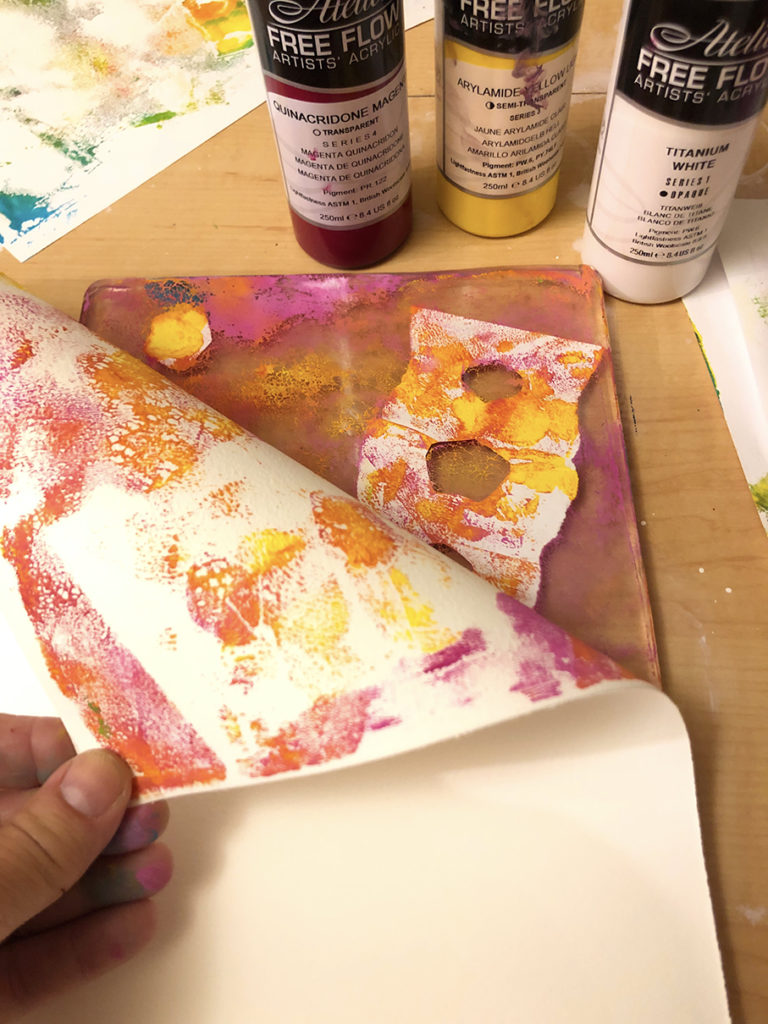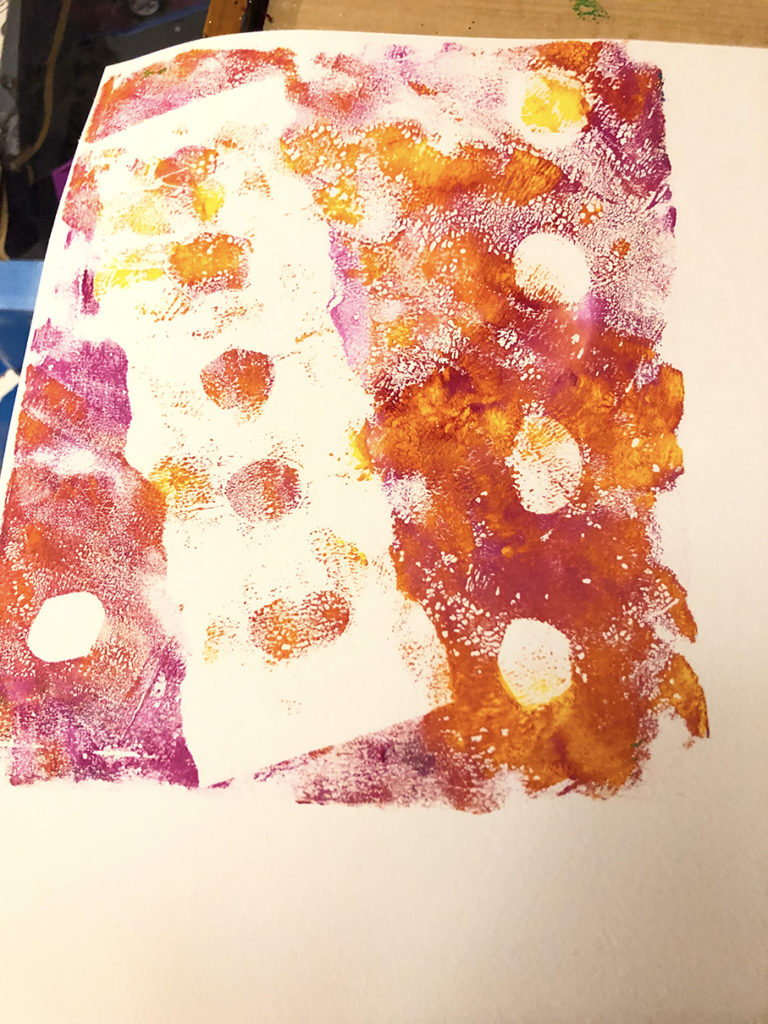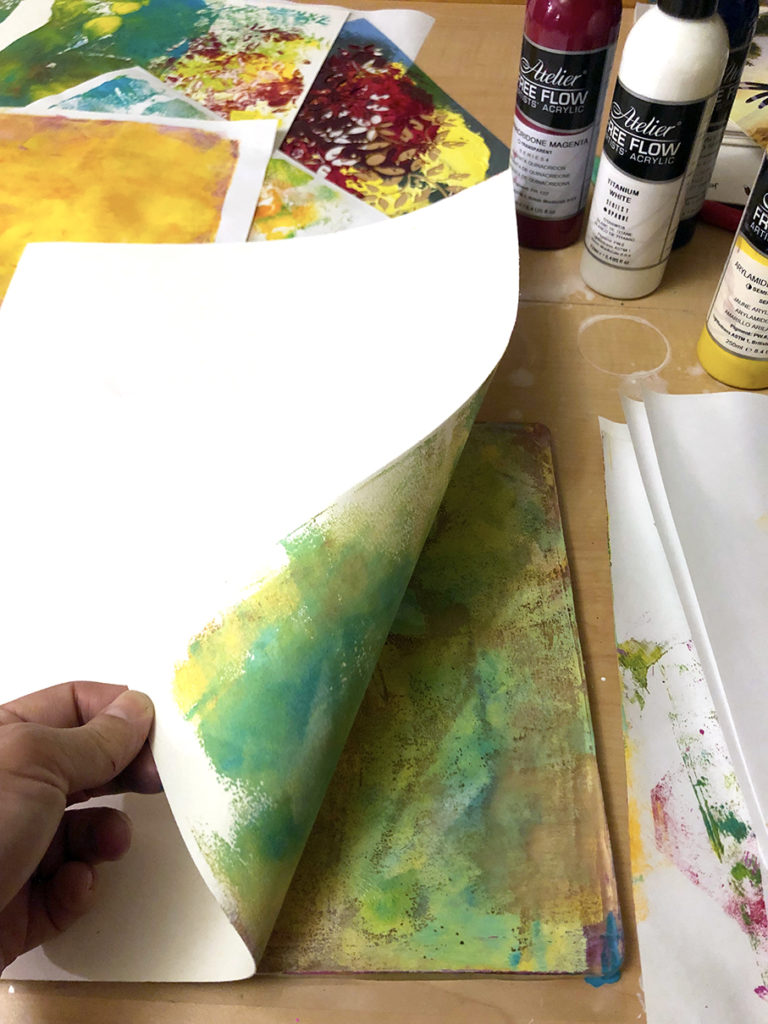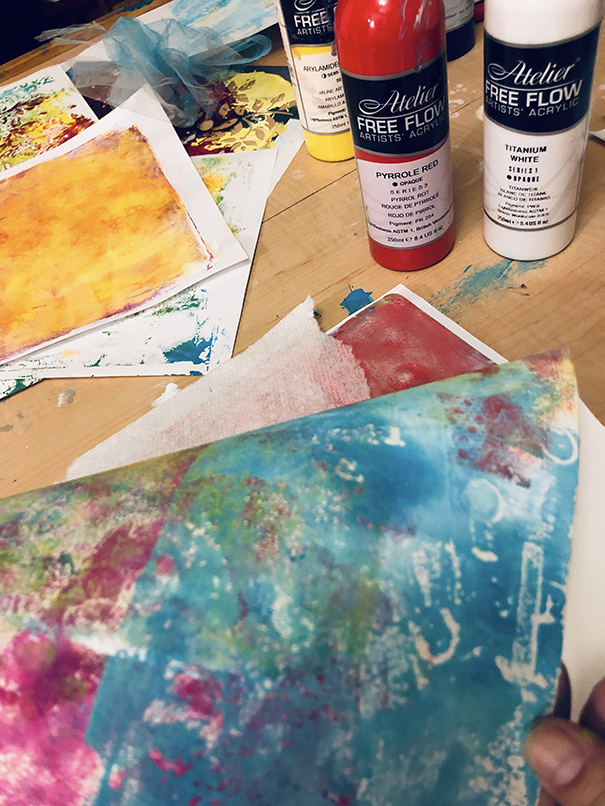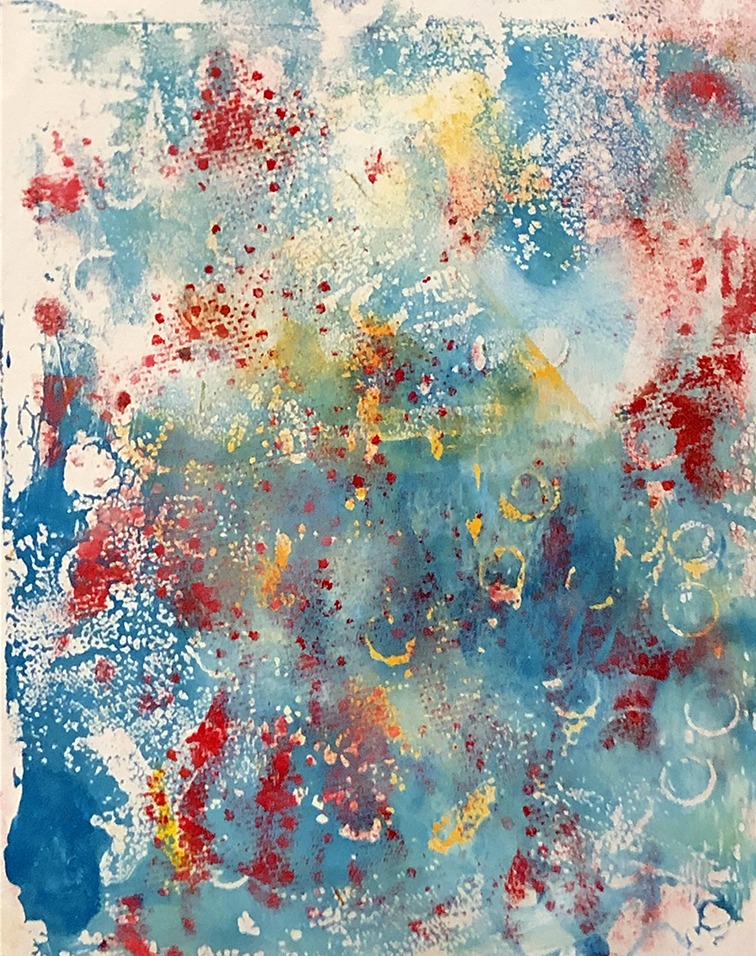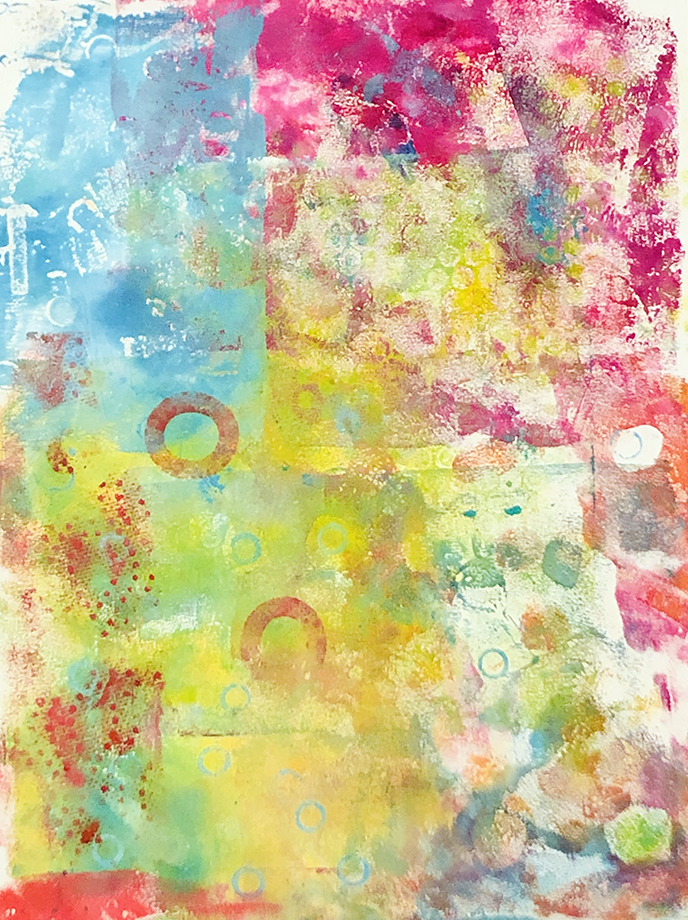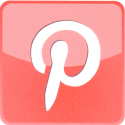(To access past newsletters, please click here.)
NOTES FROM JENNIFER VONSTEIN
More Fun With Free Flow
As featured in Australian Artist Magazine - click to download the article
One of the great things about Atelier Free Flow is that it's just a fun paint to use. As I mentioned in the article found in the September 2019 edition of Australian Artist, I was tired of creating "heavy" paintings and I wanted to experiment and enjoy the painting process. Because Free Flow is a fluid acrylic, it was perfect for these experimental pieces. I could work quickly and loosely as well as explore techniques such as printing into my work. Free Flow is a professional, lightfast acrylic paint, so even though I was "playing with paint," I was still using archival materials in case any of these pieces evolved into something interesting.
The first thing I did was change up my surface. I usually begin my paintings on canvas that I've primed with gesso (the coloured Atelier Free Flow Gessoes have been my go-to gesso for some time) but I decided to work on a heavyweight watercolor paper. I also chose to use a Gelli Plate, which is a durable, reusable gel printing plate, most often used for monoprints. Free Flow has a nice consistency for printmaking (you don't need much paint), and I applied some colour with a brayer and added a handmade stencil onto the Gelli Plate.
Atelier Free Flow Quinacridone Magenta, Titanium White, Arylamide Yellow Light and handmade stencils on a Gelli Plate
Tip: If you feel you have too much paint on the plate, pull some off using scrap paper or paper from the recycling bin. I was ready to pull my 1st print.
Pulling the print
The 1st Print
I liked how that looked, so I quickly created variations on the theme, choosing Free Flow colours that would complement one another when printed one after the other. I didn't have to clean my plate between prints - I just used that same piece of scrap paper to pull any remaining paint on the plate.
Pulling another layer of Cobalt Turquoise Light and Arylamide Yellow Light
I created textures on the plate by removing some paint with rags, netting, foam stamps, a spool of thread and bubble wrap. I even used a paper towel for the pattern and to make a soft edge stencil. I pulled excess paint and made ghost prints after each pull, creating a secondary pattern.
And another layer with a paper towel texture...
Excess Paint/Ghost Prints - you can really see the paper towel texture on this
I continued to move my surface around until the entire page was covered with an allover design I liked.
Final print
One of the great things about this process was that I remained unattached to the outcome (for the most part). Of course, I wanted to create something good, but during this studio time I wanted to approach my work in a different way than I normally do. As Oscar Wilde said, "Art is the only serious thing in the world. And the artist is the only person who is never serious."
Please send me an email or let us know on Facebook if you decide to try something that is "not serious!"
Who Am I?
I am Jennifer VonStein, and I have been Chroma’s Resident Artist for almost 13 years. I work primarily with acrylics, oils, watercolors and mixed media/collage, and I do my best to help artists with their practical considerations or concerns about materials for their art. Although I am based in the USA, I consult with artists worldwide and will be writing some articles along with Chroma’s founder, Jim Cobb. If you have feedback or any questions you would like answered in a future article, please email me at jvonstein@chromaonline.com.
Share Your Artwork With Us
We would love to share your mages on our different social media networks in order to create a community of artists. If you use Atelier Interactive, Atelier Free Flow, A2, Jo Sonja or any of the new Mediums, please let us know! Email us at: marketing@chromaonline.com.


